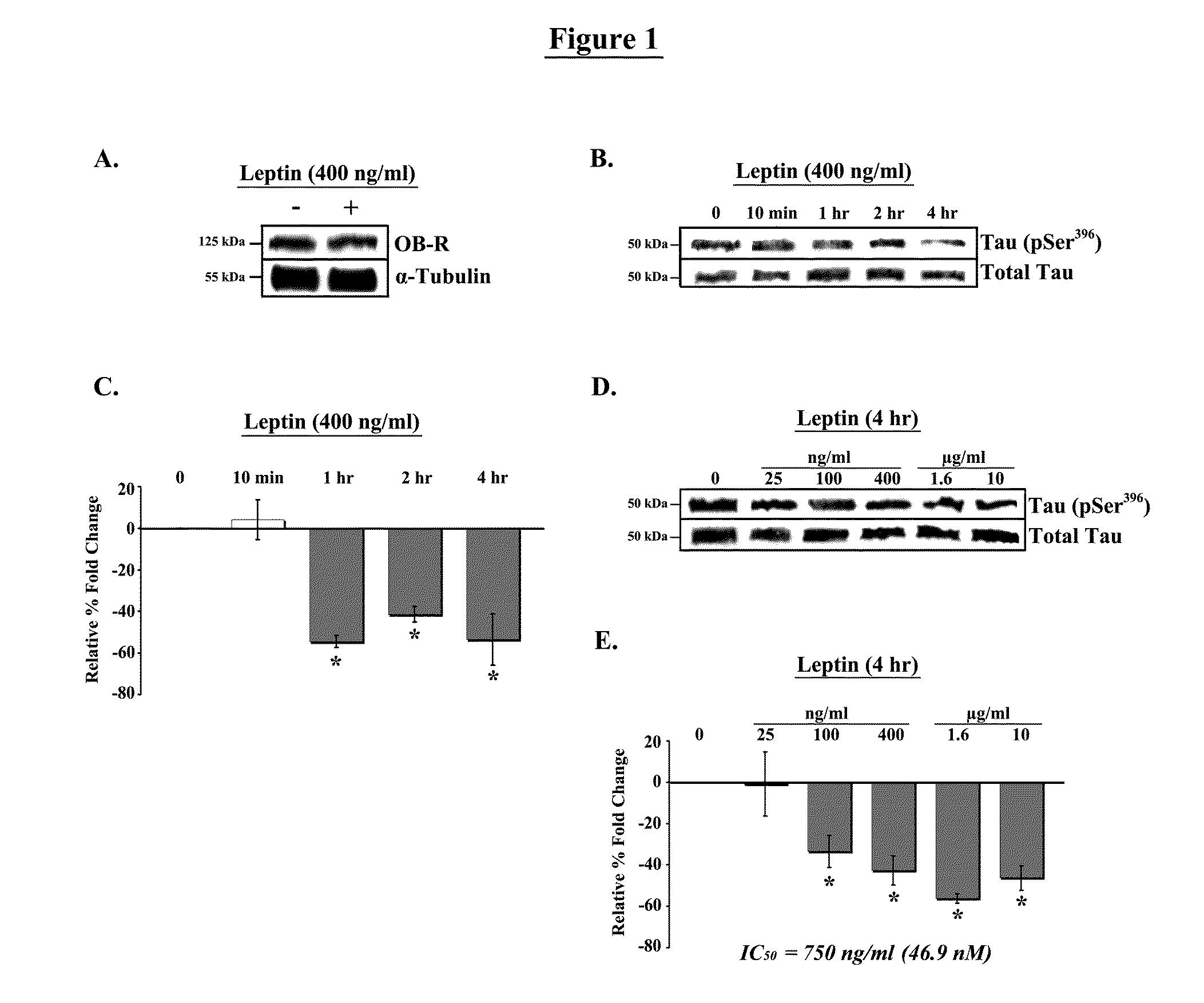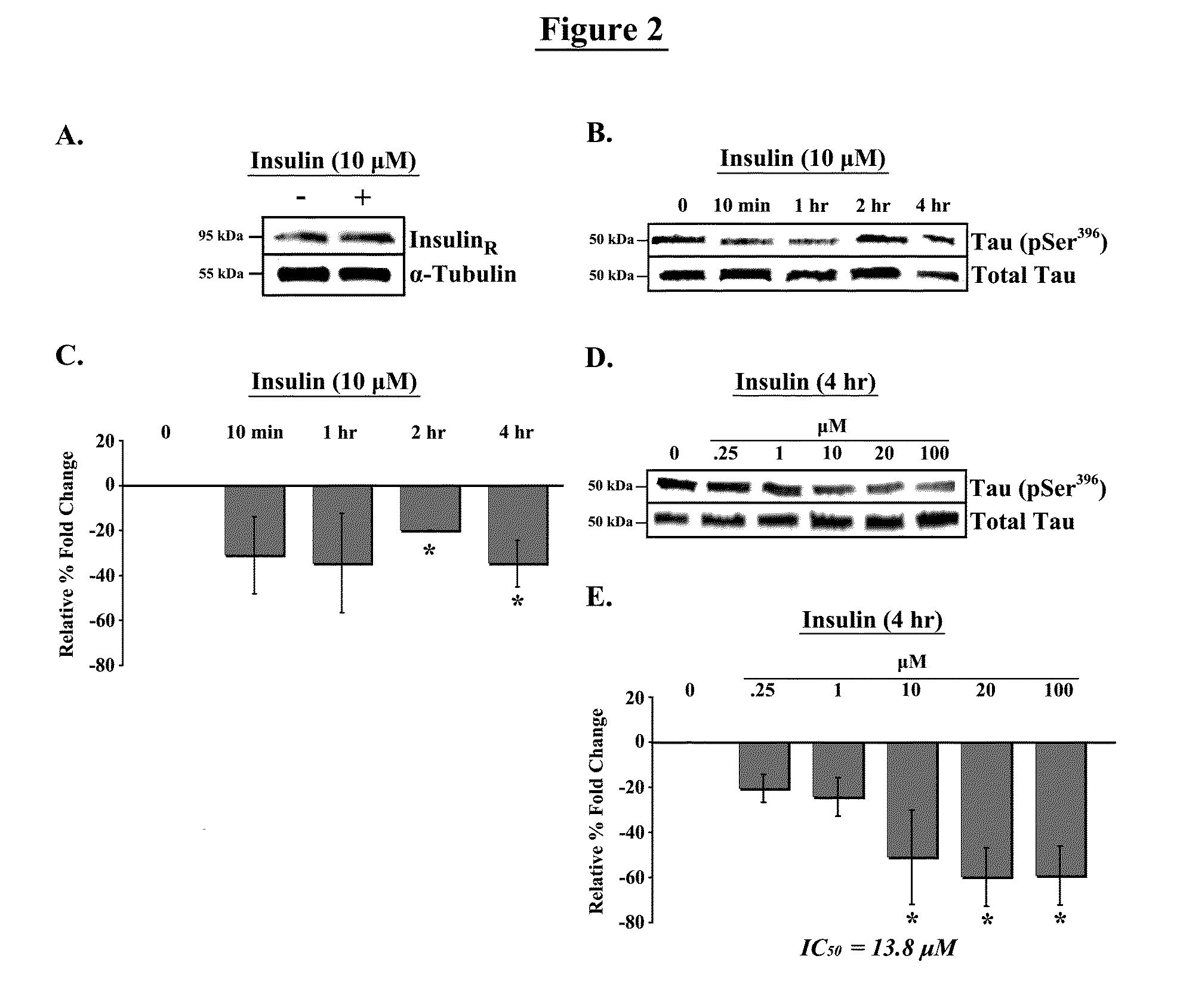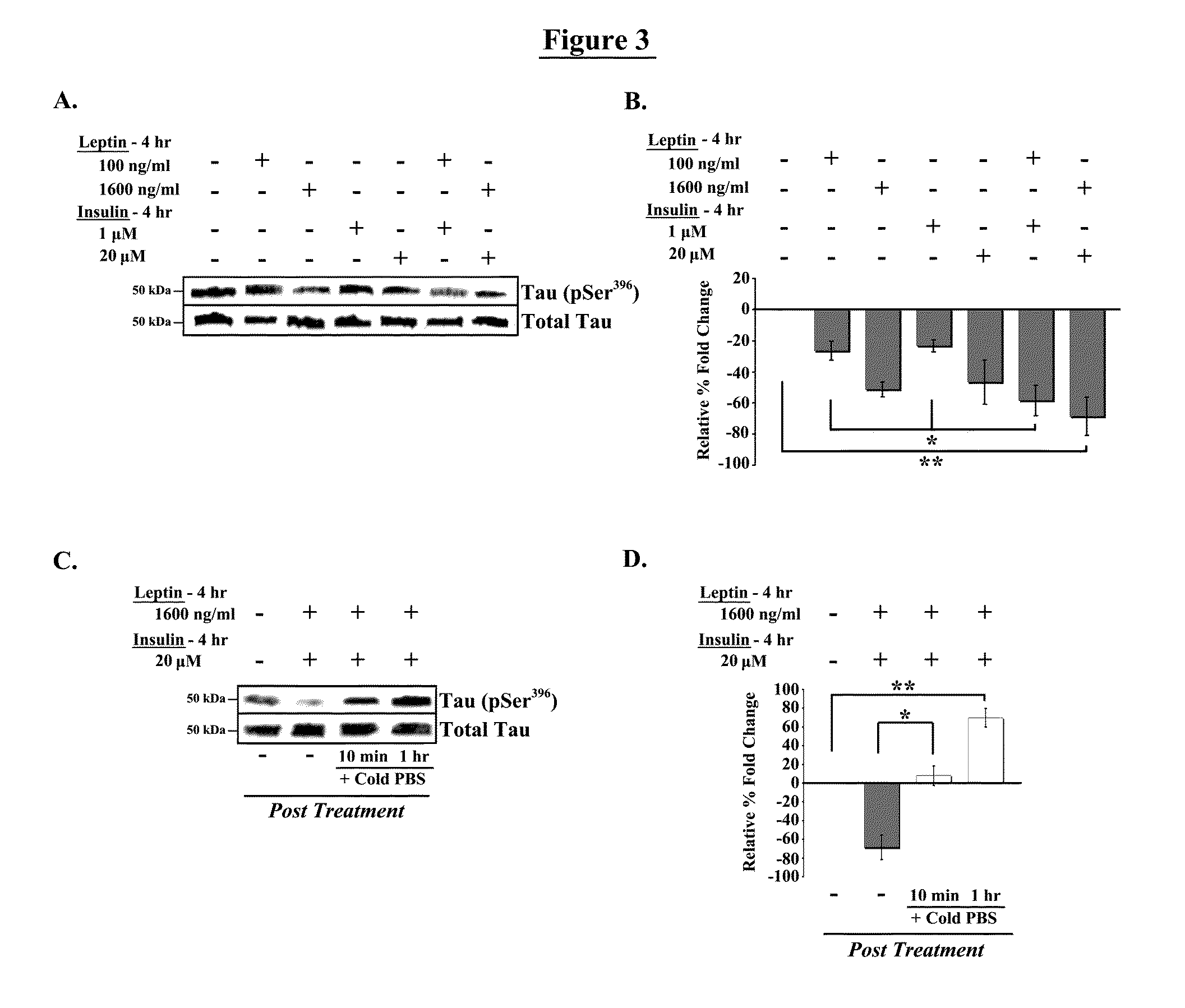Methods for treating progressive cognitive disorders related to neurofibrillary tangles
a neurofibrillary tangle and cognitive disorder technology, applied in the field of progressive cognitive disorder treatment, can solve the problems of neurodegeneration, neurodegeneration, neurodegeneration, neurodegeneration, etc., and achieve the effect of improving cognitive function resilien
- Summary
- Abstract
- Description
- Claims
- Application Information
AI Technical Summary
Benefits of technology
Problems solved by technology
Method used
Image
Examples
example 1
Leptin and Tau Phosphorylation in RA-Induced SY5Y Cells
[0148]RA induction of the human neuroblastoma cell line, SY5Y, has been reported to induce hyperphosphorylation of tau at AD-related sites. We therefore utilized SY5Y cells induced with retinoic acid (RA-SY5Y) for 7 days as our primary in vitro model to investigate the effects of leptin and other treatments on tau phosphorylation.
[0149]The first set of studies examined expression of the leptin receptor (OB-R) in RA-SY5Y cells treated with 400 ng / ml leptin or placebo. Both treated and placebo cells were found to express relatively high levels of OB-R (FIG. 1A). We next determined whether leptin had an effect on tau phosphorylation. Cells were treated for a range of time periods with 400 ng / ml leptin or placebo, and phosphorylation of tau at Ser396, a site within the microtubule-binding region of tau, was measured (FIG. 1B and FIG. 1C). Significant (p396) phosphorylation were observed in cells treated with leptin for 1 hour, 2 hou...
example 2
Insulin and Tau Phosphorylation in RA-Induced SY5Y Cells
[0151]We tested the effect of insulin treatment on tau (Ser396) phosphorylation in RA-SY5Y cells and compared it to that of leptin.
[0152]The first set of studies examined expression of the insulin receptor in RA-SY5Y cells treated with 10 μM insulin or placebo. Both insulin and placebo-treated cells were found to express high levels of insulin receptor (FIG. 2A). We next determined the effect of insulin on tau phosphorylation. Cells were treated for a range of time periods with 10 μM insulin or placebo, and phosphorylation of tau (Ser396) was measured (FIG. 2B and FIG. 2C). Significant (p396) phosphorylation were observed in cells treated with insulin for 2 hours or 4 hours compared to placebo-treated cells (FIG. 2C; far right bars). No change in tau (Ser396) phosphorylation was observed in cells treated with insulin for 24 hours compared to 4 hours (data not shown).
[0153]As in the leptin studies (FIG. 1D and FIG. 1E), a dose-r...
example 3
Combined Leptin and Insulin Treatment and Tau Phosphorylation
[0155]RA-SY5Y cells were treated for 4 hours with sub-optimal or maximum effect doses, either in combination or alone, of leptin and / or insulin, and tau (Ser396) phosphorylation was measured (FIG. 3A and FIG. 3B). A significant (p0.05) reduction in tau (Ser396) phosphorylation compared to either treatment alone.
SUMMARY
[0156]The combined treatment with sub-optimal doses of leptin (100 ng / ml) and insulin (1 μM) produced a significant decrease in tau phosphorylation compared to either treatment alone (FIG. 3). This result demonstrates the potential benefits of a combinatorial treatment for AD, as leptin and insulin may produce an additive effect.
PUM
| Property | Measurement | Unit |
|---|---|---|
| Dimensionless property | aaaaa | aaaaa |
| Dimensionless property | aaaaa | aaaaa |
| Fraction | aaaaa | aaaaa |
Abstract
Description
Claims
Application Information
 Login to View More
Login to View More - R&D
- Intellectual Property
- Life Sciences
- Materials
- Tech Scout
- Unparalleled Data Quality
- Higher Quality Content
- 60% Fewer Hallucinations
Browse by: Latest US Patents, China's latest patents, Technical Efficacy Thesaurus, Application Domain, Technology Topic, Popular Technical Reports.
© 2025 PatSnap. All rights reserved.Legal|Privacy policy|Modern Slavery Act Transparency Statement|Sitemap|About US| Contact US: help@patsnap.com



